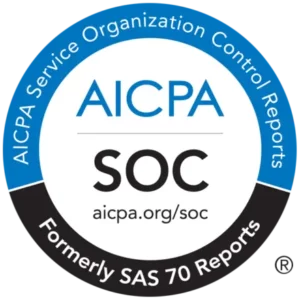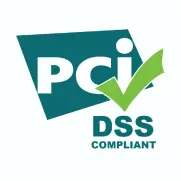Business in the collaborative world today is primarily done through writing. When proposals are carefully drafted, emails, reports and memos are written succinctly to bring more business and deeper insights. Business writing is so important that several organizations don’t give it its due, and therefore, experience a lot of problems.

What Is Business Writing?
Business writing is a form of professional writing that is used for a certain purpose to communicate within an organization or between people in different organizations for a desirable business result. Business writing includes any communication tools such as emails, reports, proposals, memos, and notices. Content for educational, training, marketing, sales and standard operating procedures is also included in the purview of business writing.
Different Types of Business Writing
When it comes to writing in business, there are different types depending on different scenarios. Each type of writing has a purpose and based on it they are listed under four principal styles of writing.
- Instructional
With instructional writing, you provide the readers necessary details for the successful completion of a task. The step-by-step process of writing style is easily understandable to the readers, who should be conversant with the fundamental principles of the process. The document will contain specific details that come within the purview of readers’ knowledge of the task, its scope and potential problems, and ways to solve them. Some examples of instructional writing are:
- Memos: A memo is a short form for a memorandum, and it is used to share procedures, policies, direct instructions or any other official business details within an organization. Memos are generally written by one person to a certain group of people or all people in an organization. It is mass communication rather than interpersonal communication. For instance, you write a memo to inform your team about an action or event or activities to complete a project or task.
- User Manuals: They are technical documents providing information about how to use a product. Also called a user guide, a user manual is a part of effective business writing, and it should make a strong impression with its design, content, color and style of writing to enhance the user experience.
- Specifications: A specification is a detailed description of a process or properties of a product, which is meant to be built or reconstructed by the knowledgeable user, who is unfamiliar with it. These technical documents help in the effective distribution of a product.
- Informational
Some business communications are created only for record or reference and to inform employees in the organization. They do not have any significant goal, and therefore, do not require any action. This category of business writing includes important documents that record accurate information regularly showing progress and adhering to legal, as well as contractual obligations. They include:
- Reports: Most businesses rely on reports, and therefore, a lot of reports are prepared to communicate technical and business information, describe the projects completed, report events or incidents, provide solutions to a problem and implement suggestions and recommendations. With a well-written report, you can have the reader easily understand the content and make informed decisions.
- Minutes: They are written records of meetings, and includes details about the attendees, issues discussed, responses from members, final decisions taken, and to whom tasks are allotted and deadlines.
- Financials: They are prepared to show the organization’s financial performance through business activities. Financial statements usually include income and expenses statements, cash-flow statements and a balance sheet.
- Persuasive
Most business writing connected with sales are persuasive, and they are meant to help readers make judgements about a product, service, brand or company. With persuasive writing, you can also improve your relationship with your client. Here are some popular business documents that come under persuasive writing.
- Proposals: They are documents created to offer a particular product or service to a company or client. If a proposal is requested, it is solicited, and the client has made a decision to buy. An unsolicited proposal is meant for a well-defined and limited activity. A proposal includes an overview of a product or service, its benefits, costs and timeline.
- Press Release: A press release is, also known as news release, and is for media outlets and journalists prepared by a public relations professional. It should persuade a reader through fact-based news.
- Sales Email: You send a sales or business email to a large audience to promote or sell a product or service.
- Transactional
Transactional writing includes most of the everyday communications through business email. Other than this, it also includes invoices, notices, and forms.

How to Write a Small Business Blog?
Here are the 7 business writing tips to write a blog post.
- Know Your Audience
Ask yourself, “What do your audience want to know about? “What will you write to resonate with them? To write a blog, you should know your audience. Here, it is worth creating buyer personas, which will help you know their interest. This helps you to choose a topic.
- Customize Your Blog
The next step is to design your blog’s appearance to suit the theme of your brand, product and content you plan to write. You can do this by having your logo and ‘About us’ page, which will remind the readers about your brand, vision and mission.
- Choose a Topic
Now, it is time to choose a topic for your blog. It is advisable to choose a general topic instead of “how to do…” topic in the first blog.
- Write a Captivating Title and Introduction
You need to focus your writing by coming with a few iterations or titles for your content. At the same time, you should also learn how to write an effective introduction. Your blog should grab the reader’s attention in the first few sentences itself. You can do this by being empathetic, telling a joke or story, or giving interesting statistics.
- Organize and Write Your Blog
A good business writing asks for good organization of the information. Have your ideas or points connected and mentioned separately to help communicating effectively. Now, write the content by expanding your ideas in different paragraphs using a topic sentence. You need to use appropriate sentence structure and string the sentences to maintain a flow. Also, use the right word choice to express your thoughts clearly.
- Proofread Your Writing
Once you have done with your writing, you need to proofread it for any errors or omissions. As a business writer, you can improve your business writing by learning some tips and tricks of editing.
- Check for Plagiarism
If you fail to check for content duplication, you cannot claim your blog to be ready for posting. With a reliable plagiarism checker, you can detect any similar or paraphrased phrases in your blog and ensure its originality. As a student, it is advisable to join a business writing course at any state university to develop your business writing skills.

